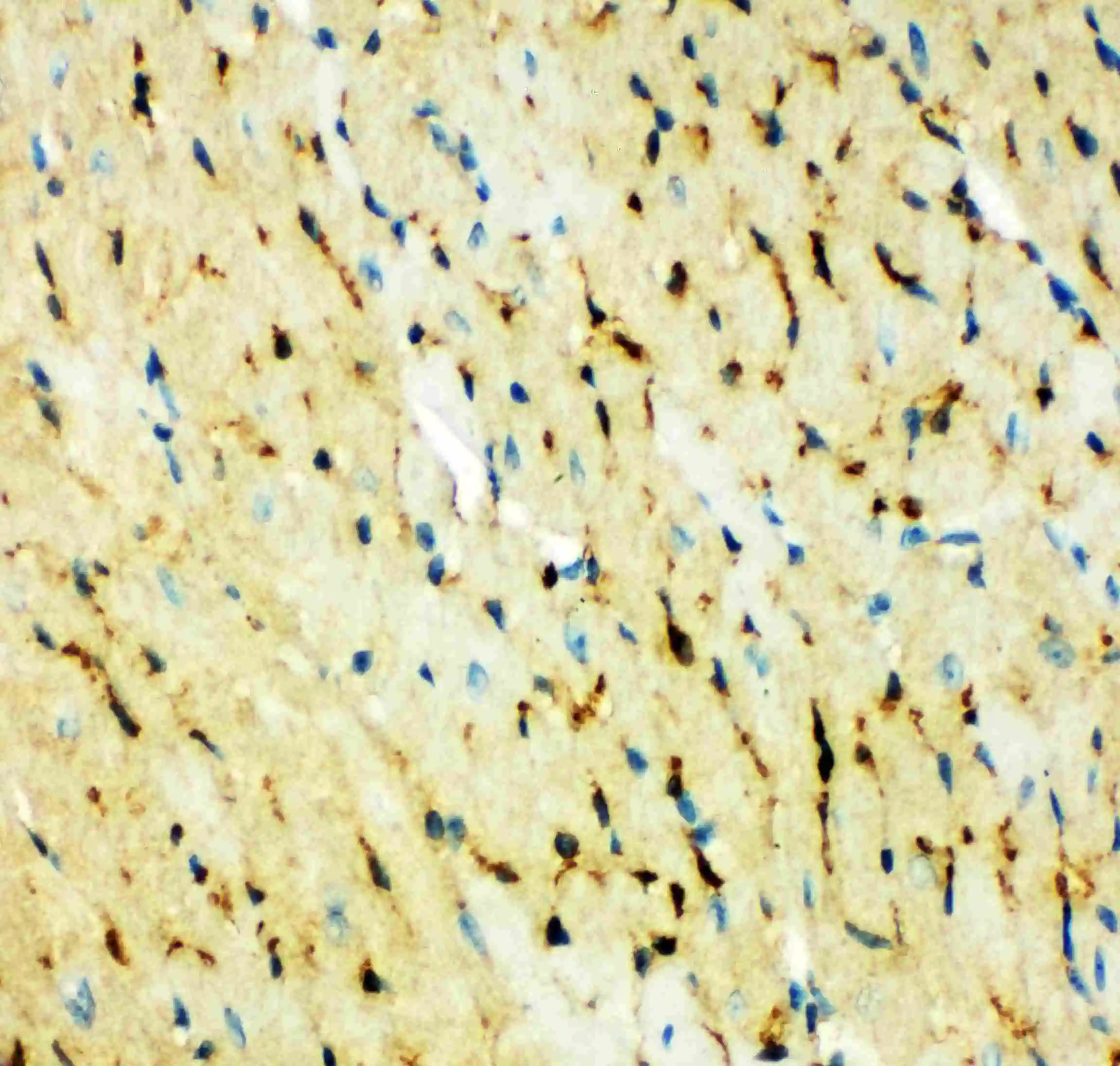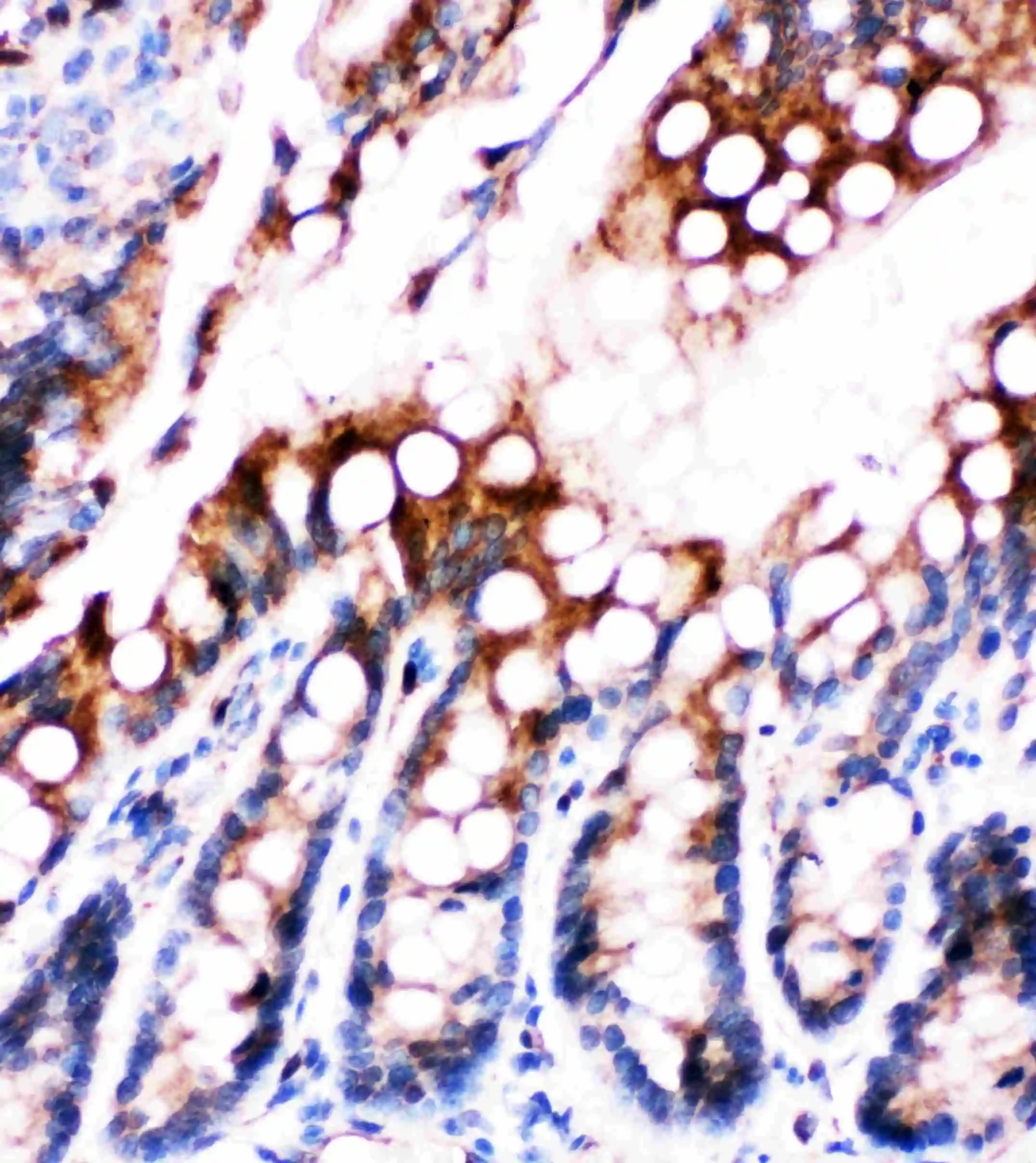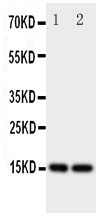
IHC-P analysis of mouse cardiac muscle tissue using GTX12109 FABP5 antibody.
FABP5 antibody
GTX12109
ApplicationsWestern Blot, ImmunoHistoChemistry, ImmunoHistoChemistry Paraffin
Product group Antibodies
ReactivityMouse, Rat
TargetFabp5
Overview
- SupplierGeneTex
- Product NameFABP5 antibody
- Delivery Days Customer9
- Application Supplier NoteWB: 0.1-0.5microg/ml. IHC-P: 0.5-1microg/ml. *Optimal dilutions/concentrations should be determined by the researcher.Not tested in other applications.
- ApplicationsWestern Blot, ImmunoHistoChemistry, ImmunoHistoChemistry Paraffin
- CertificationResearch Use Only
- ClonalityPolyclonal
- Concentration500 ug/ml
- ConjugateUnconjugated
- Gene ID16592
- Target nameFabp5
- Target descriptionfatty acid binding protein 5, epidermal
- Target synonymsE-FABP; epidermal-type fatty acid-binding protein; epithelial fatty acid-binding protein; Fabpe; fatty acid-binding protein 5; fatty acid-binding protein, epidermal; keratinocyte lipid-binding protein; Kl; Klbp; ma; mal1; PA-FABP; psoriasis-associated fatty acid-binding protein homolog; uncharacterized protein LOC16592
- HostRabbit
- IsotypeIgG
- Protein IDQ05816
- Protein NameFatty acid-binding protein 5
- Scientific DescriptionThe protein encoded by this gene is part of the fatty acid binding protein family (FABP). FABPs are a family of small, highly conserved, cytoplasmic proteins that bind long-chain fatty acids and other hydrophobic ligands and participate in fatty acid uptake, transport, and metabolism. In humans this gene has been associated with psoriasis and type 2 diabetes. In mouse deficiency of this gene in combination with a deficiency in Fabp4 confers protection against atherosclerosis, diet-induced obesity, insulin resistance and experimental autoimmune encephalomyelitis (the mouse model for multiple sclerosis). Alternative splicing results in multiple transcript variants that encode different protein isoforms. The mouse genome contains many pseudogenes similar to this locus. [provided by RefSeq, Jan 2013]
- ReactivityMouse, Rat
- Storage Instruction-20°C or -80°C,2°C to 8°C
- UNSPSC12352203
References
- Nuclear Factor Erythroid 2-Related Factor 2 Deficiency Results in Amplification of the Liver Fat-Lowering Effect of Estrogen. Rui W et al., 2016 Jul, J Pharmacol Exp TherRead more


